Holberg Collection
Literature on and by Ludvig Holberg (1684-1754), donated by apothecary Gustaf Bernström, who has contributed significantly to the library over the years. Holberg was a Danish-Norwegian author and playwright of international renown.
About the collection
The contents of the collection spans Holberg's entire written production, and includes history, church history, geography, biography, moral philosophy, published letters, prose and verse as well as comedy. Further, there are works by other authors building on or inspired by the writings of Holberg. In addition, there is a small number of bibliographies and works on Ludvig Holberg. Finally, there are a few separate illustrations of the works by Holberg, and a playhouse poster from 1845.
In its entirety, the collection provides a comprehensive picture of Ludvig Holberg as an author of his time, of his publishers and the geographical distribution of his writings. The collection makes it evident just how quickly Holberg's works were printed and translated, and thereby how Holberg went from being a Danish-Norwegian author to a European one. There is a significant amount of provenances to trace in the collection, yielding an idea of various Holberg readers. The many new 19th century editions, both the cheaper ones and the most lavish, portray an author who was not only widely read, but also highly revered.
The bindings of the Holberg Collection are largely contemporary with the publications, and in relatively good condition. Many of them constitute expensive work, which might be an indication of Holberg's status as an author in the 18th century. Gustaf Bernström had some of the other volumes rebound, often by bookbinder Gustaf Hedberg. These rebound volumes are easily recognised, as they bear Bernström's gilded monogram on the front covers. Some of the editions that have never been bound, and thus remain as individual booklets are in worse shape, particularly those published in the second half of the 19th century. However, they are complete, and thereby an example of how these editions looked in their historical context.
History
The Holberg Collection includes the debut work Introduction til de fornemste Europæiske Rigers Historier in a first edition from 1711, as well as a posthumous edition from 1757. Holberg's second published title concerned law, the Introduction Til Naturens- Og Folke-Rettens Kundskab, first printed in 1716, in two volumes. However, the collection includes two editions with different title pages, one of which bears the title Ludvig Holbergs Moralske Kierne Eller Introduction til Naturens og Folkerettens Kundskab … with the year of printing given as 1715, while the other edition has a title page saying Ludvig Holbergs Introduction til Naturens og Folkerettens Kundskab […] with the year of printing given as 1716. According to the bibliographical literature on Holberg, there is some uncertainty as to why the years of printing differ, but as stated by Holger Ehrencron-Müller, there can be no doubt that the book in its entirety was published in 1716, and that for various reasons it comes with different title pages. As if to be on the safe side of the matter, the Holberg Collection includes one of each. (Ehrencron-Müller, Holger, Forfatterlexikon omfattende Danmark, Norge og Island indtil 1814. Vol 10, Holberg. Pt. 1, Aschehoug, København, 1933, p. 65.)
After this initial period, Holberg's authorship veered from specialist and technical writing for a few years, to focus on fiction. Read more about these works below. Holberg spent the most time on his large historical works: Dannemarks og Norges Beskrivelse (1729), Dannemarks Riges Historie (1734—35), Almindelig Kirke-Historie (1738) and Jødiske Historie (1742). These are all present in the collection, in first editions and with contemporary bindings in good condition. As noted by F. J. Billeskov Jansen, there are noticeable traces of the authority that Holberg enjoyed in Sweden. On the title page of the original edition of Heltehistorier … Holberg has stated that they are ”in the manner of Plutarch”. In Andreas Schönberg's Swedish equivalent, Hjältars sammanliknande historier from 1756, the title page claims instead that the work is made ”in the manner of Baron Holberg”. (Billeskov Jansen, F. J., ”Holbergsamlingen i Göteborgs stadsbibliotek” in Bok- och bibliotekshistoriska studier tillägnade Gustaf Bernström 15/1 1947., Almqvist & Wiksell, Stockholm, 1947, p. 25.) A rarity well worth mentioning among these historical works is Holberg's Oratio funebris in obitum … (Holberg's speech over Frederick IV), written in 1730 and printed in 1746.
Another core work in Holberg's production is his collection of essays, Moralske Tanker (1744). Billeskov Jansen calls this a main work of Danish reasoning prose. (Billeskov Jansen, p. 26.) This work attained immediate popularity, and was reprinted an impressive three times in 1744 alone. The three printings reveal an interesting schism of book history. Holberg had the first edition printed at his own expense, which is indicated on the title page. Printer Ernst Henrich Berling quickly realised that the book had become a success, and had a new edition printed at his own initiative, with a title page claiming that this, too, was the first edition printed at Holberg's expense. When Holberg realised he had been deceived, and that there was little economic compensation to be had from taking legal action, he sold the publication rights to Berling, who swiftly printed another new and legal edition, paid for by Berling and authorised by Holberg. (Ehrencron-Müller, vol 1, p. 318—321). The Holberg Collection includes all these three editions from 1744. Beyond them, the collection has another seven editions in Danish, Swedish, German, Dutch and French. Holberg's largest collection of essays, his Epistler, was printed in two editions in 1748, two editions in 1750 and one in 1754. All of them are represented in the Holberg Collection, as well as naturally a number of later editions and translations. In one of the copies of vol. V in a 1754 edition, someone has made notes in the form of a Swedish index. Generally, there are several different volumes of collected works on Holberg and his authorship, in parts and in its entirety. Among these are professor K. L. Rahbek's edition of Holbergs Udvalgte skrifter (1804—14) in 21 contemporary paper-bound volumes, with previous owner Baron Gustaf von Schwerin and before him the Professor of Aesthetics at Lund University, A. Lidbeck.
Fiction
Peder Paars is an epic comedic poem, issued in four parts in 1719–21. It is a parody of the heroic poems of Antiquity and the Renaissance. The protagonist of the poem, Peder Paars, is a merchant embarking on a voyage to meet his beloved Dorothea in Aarhus. On the way, he is shipwrecked and stranded on the island of Anholt, where he is subject to the temptations of the bailiff's daughter, Nille. The first Swedish edition was published in 1750. The popularity of the work can be gleaned not least by how many editions were issued in Holberg's lifetime. The Holberg Collection includes 21 different editions of the work, mainly in Danish, but in Swedish and German too. Among these the earliest edition is the one known as the ”Tredie (third) edition” from 1720. Strictly speaking, this is the second edition, preceded by the first in 1719-20. Since Peder Paars consists of four parts, and parts 1-3 were such a success, the first three parts had already been reprinted in 1720. When the time came to publish the final part, Holberg took the opportunity to partially rework parts 1-3 before all four parts were sent to the printer, and for this reason, he dubbed this version the "third edition". In total, there are 34 copies of Peder Paars in the Holberg Collection, including ducplicates. However, the duplicates frequently have individual, distinguishing traits. This might be details such as a preface of the second volume inserted into the first, or the woodcut preceding the title page differing between copies. All these variations illustrate plainly how book production at the time was far from standardised. Among the various editions is the 1772 luxury edition in quarto, as well as the rare subscription print of that edition. According to Billeskov Jansen, only two known copies of the latter exist, one of which is held by the Royal Danish Library in Copenhagen, and thus the other one in Bernström's Holberg Collection. An interesting detail is that the two copies differ regarding the stated time of publication. A few individual issues from the subscription plan have surfaced during various book auctions over the years, but with no certain proof of which variety they represent.
Holberg wrote other, less extensive satires both before and after the initial publication of Peder Paars, and these are represented in the Holberg Collection. Nicolai Klimii iter subterraneum (1741), translated to Danish as Niels Klims underjordiske Rejse (1742) is a late revisit to fiction by Holberg. Niels Klim … is a satire novel, originally written in Latin, but quite immediately translated to Danish and other languages. The protagonist, Nicolai, goes for a stroll outside Bergen in Norway, and falls into the subterranean world, landing on a planet where he encounters strange societies and people. Just like Thomas Moore's Utopia, or Gulliver's travels by Jonathan Swift, Nicolai Klimii … is a satire of Holberg's own time. The Holberg Collection includes 31 different editions of this work. The first four Latin editions from 1741, 1745, 1754 and 1766 are represented here, along with nine editions in Danish. The collection includes another eighteen translations in Swedish, German, Dutch, English and Finnish. In the other holdings of the library are another five editions, including translations to Icelandic and French. Nicolai Klimii … was often illustrated, and the majority of the editions in the Holberg Collection retain their plates. One edition worth special mention is the one issued by Christian Pelt in 1766, still complete in its original form as individual booklets: meaning it has not been bound or stitched at all, but remains in the same condition as when it came from the printing press as 26 uncut booklets in mint condition. This is likely a highly unusual occurrence.
Comedies
In our own time, Ludvig Holberg is probably best known as a playwright and author of a number of comedies. 1721 saw the opening of Denmark's first public theatre, and Holberg became its foremost dramatist. Between 1722-1724 he wrote 20 comedies for this scene. Today, the most frequently played among them is Jeppe paa Bierget eller den forvandlede Bonde (1722). The first Swedish translation, followed by many others, was issued in 1735 and is included in the collection. The play concerns farmer and habitual drunkard Jeppe, passed out on a dungheap and found by the local baron. As a joking social experiment, Jeppe is brought to the castle while still asleep, and dressed in fine clothes. When he wakes up, everyone tells him he is the baron. Initially he has his doubts, but once he believes himself to be the baron, he turns despotic. The play ends with Jeppe finding out that everything has been a joke, and he is returned to his home, a drunkard still. The theme of the play is that people tend to become drunk with power when given great influence.
Almost as important among the comedies of Holberg is the Enlightenment play Erasmus Montanus (1723). The protagonist Rasmus Berg moves from his small home town to Copenhagen, studies, and becomes, so to speak, enlightened. He styles his name in the Latin fashion, calling himself Erasmus Montanus. Upon returning to his home town, he is met with much prejudice, and carries himself both pompously and admonishingly. The moral of the story thus concerns both uneducated countryfolk, and city people too wrapped up in their books.
The Holberg Collection has a number of early prints of the comedies, in parts and as collections. In total, the Holberg Collection has 29 Danish editions of collected comedies, some in more than one copy. Collections of translated comedies feature in 12 editions in Swedish, German, Dutch, English and French. However, these collections do not always include all the plays. The Swedish collection, for example, includes only five of Holberg's comedies. The first edition of collected comedies, Comoedier sammenskrevne for den nye oprettede danske skue-plads, was published in 1723-24. This exists in the Holberg Collection only as a facsimile from 1902. The second edition, from 1724, saw no more than the first volume published. In the other holdings of the library is one copy of this volume, which also includes an edition with two additional plays, which the printer has issued without Holberg's permission. A classic pirated work, in other words. The edition that was printed in 1731-54 is found in its entirety in the other holdings of the library, and volumes III-V as also found in the Holberg Collection. Further, the collection holds a number of further, complete editions, three of which are from the 18th century. One of the copies printed in 1758 has evidently been the script for a Swedish drama group, as the names of four actors are noted on the final page. All of Holberg's 31 comedies also feature as individual prints in the Holberg Collection, all in all 91 volumes printed between the 18th and 20th centuries.
Acquisition history
The collection of prints by and about Ludvig Holberg was donated to the Gothenburg city library in 1935. At the time, it included some 400 volumes and about 100 smaller booklets. Through the years, Gustaf Bernström brought several additional donations to the library, and today, the number of volumes in the collection number 539.
A catalogue of the Holberg Collection, the Collectio Holbergiana was made in 1959 by Lage Hultén. This catalogue also includes writings by Holberg that are not part of Gustaf Bernström's Holberg Collection, but can be found in the other holdings of the library. All in all, the Collectio Holbergiana has 555 posts. Holberg is thus well represented in the other collections of the library. Even if the Holberg Collection is worth highlighting in itself, there is reason to stress that the library as a whole, the Holberg Collection included, gives a more accurate idea of the rich source material available. For example, it could be mentioned that the Holberg Collection includes 11 editions of Jeppe in Danish and in various translations, as well as duplicates. In the other holdings of the library are another 19 editions of Jeppe, 14 of them in Swedish. Together, the collections provide a Danish-Swedish portrait of Holberg's authorship, and his influence on Scandinavian literature.
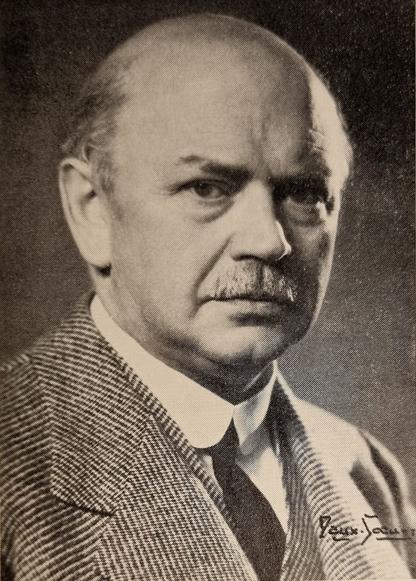
Access the collection
The collection is held in the closed stacks at the Humanities library. It is available for reading room use only.
Catalogue
The collection is catalogued in its entirety.
In Libris
In Supersök
Inventory
The Collectio Holbergiana made in 1959 covers the contents of the collection.
In Libris
In Supersök
Humanities library
Renströmsgatan 4
405 30 GOTHENBURG
Phone: 031-786 17 45
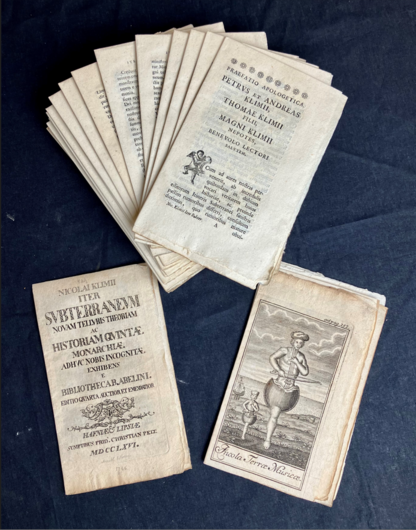
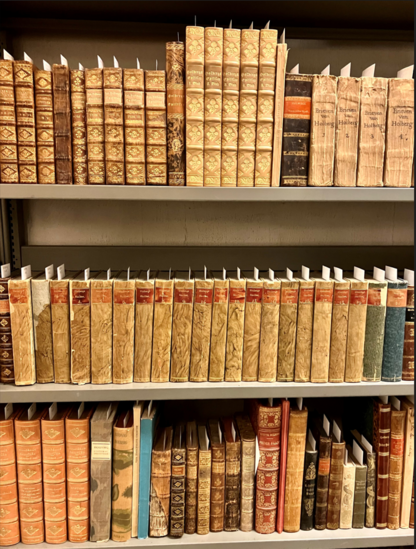

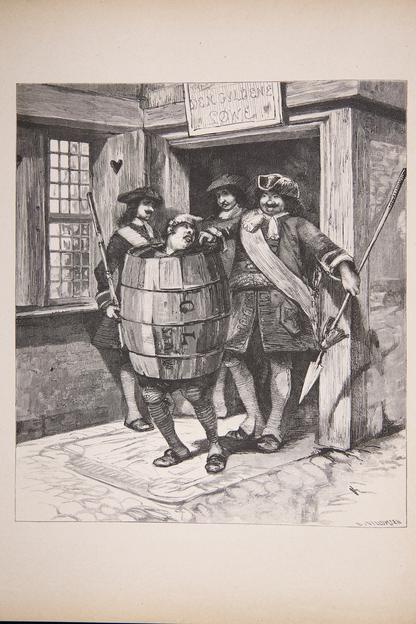
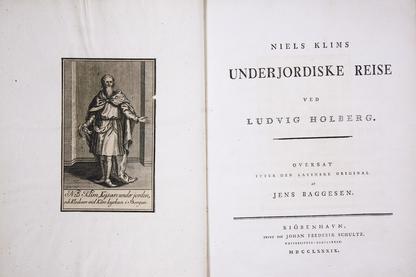
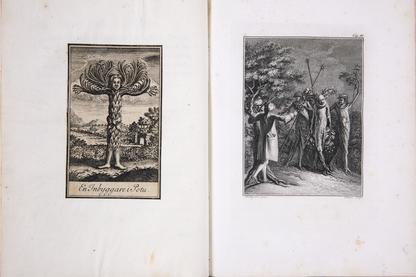
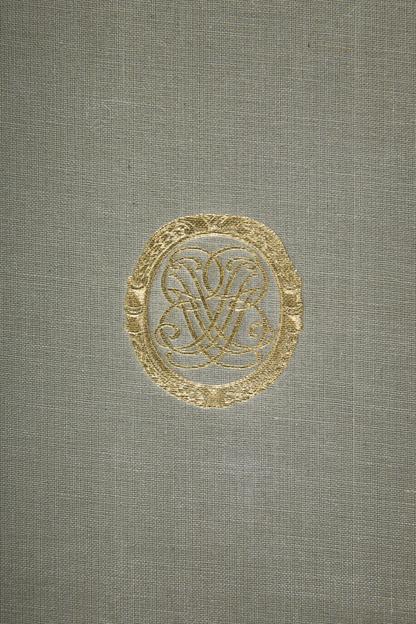
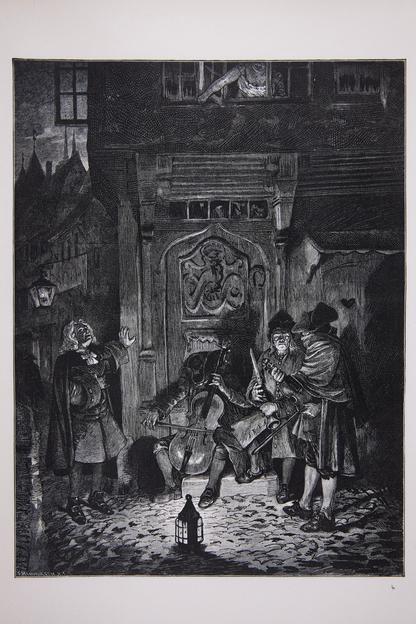
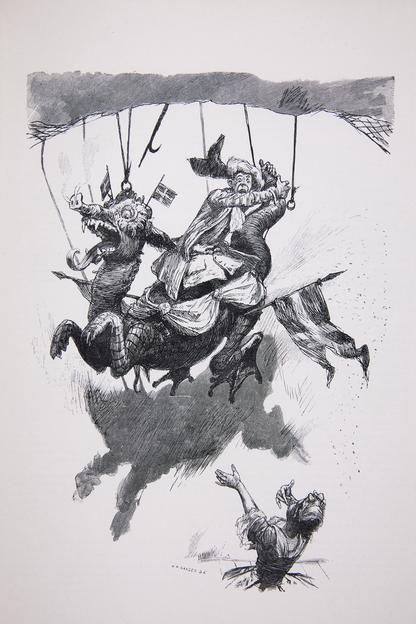
Text:
Stefan Benjaminsson
The collection is catalogued by Stefan Benjaminsson.
Biography
Ludvig Holberg
Ludvig Holberg (1684–1754) was a Danish-Norwegian author and historian. He was born in Bergen, Norway, but studied. lived and worked for the majority of his lifetime in Copenhagen, Denmark. His way there was not entirely straightforward. His first stay in Copenhagen ended when his money ran out. However, he returned and successfully graduated in theology, after which he returned to Norway and worked as a private tutor. After a while, he wished to see more of Europe, and travelled to the Netherlands. There, he became ill, and had to return to Norway. In 1706 he travelled to Oxford, England, and studied there for two years, after which he returned a third time to Copenhagen, where he took up teaching at the university. After further travels in Europe, he began to write, and the first thing he published was a number of historical works. For the majority of his active career, he penned works within history, philosophy, law and technology. As a writer, Holberg was greatly influenced by the enlightenment. Previously, science had been subordinated to theology, but during the Enlightenment it was increasingly free of religious teachings, and based to a greater extent on experience and empirical studies. Holberg worked in this tradition, and contributed much to its development.
Gustaf Bernström
Gustaf Bernström (1877–1966) was an apothecary and financier in Gothenburg. He is held to be one of Sweden's foremost 20th century book collectors. Apart from an extensive collection of Swedish books, Bernström also acquired Danish literature within certain fields, mainly Danish 16th century literature and works by Søren Kierkegaard, H. C. Andersen, Kaj Munk and Ludvig Holberg. Collections of the works of the latter two authors are now held by the Humanities Library, along with many other donations from Gustaf Bernström. In 1931–1957 he served as treasurer of the then Gothenburg city library (currently Gothenburg University Library) and often made economic contributions when the library wished to acquire certain collections or individual works which would otherwise have been beyond the available budget.
Lack of storage space compelled Bernström to sell parts of his collection in later years. After his death in 1966, the remainder of the collection was auctioned off. In preparation of the auction, a catalogue was made for the Gustaf Bernström collection, which also included some of the collections he had previously donated to the library. (Tönnes Kleberg, Gustaf Bernström: boksamlare, mecenat, bibliografisk forskare, Uppsala, 1967 ; Lage Hulthén, Collectio Holbergiana: en samling skrifter av och om Ludvig Holberg skänkt till Göteborgs stadsbibliotek av Gustaf Bernström : katalog, Rundqvist, Göteborg, 1959.) All bibliographic information in the above text is based on the work of Hulthén, unless otherwise stated.
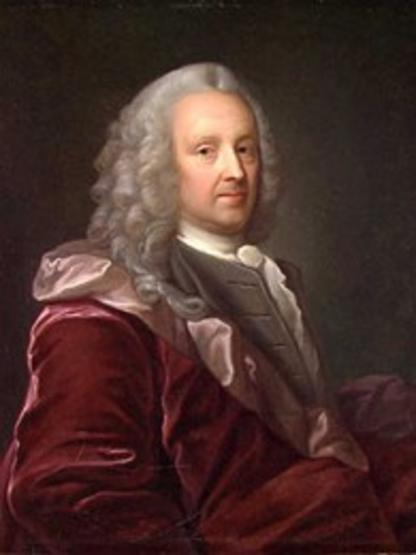
Read more
Billeskov Jansen, F. J., ”Holbergsamlingen i Göteborgs stadsbibliotek” in Bok- och bibliotekshistoriska studier tillägnade Gustaf Bernström 15/1 1947, Almqvist & Wiksell, Stockholm, 1947
Ehrencron-Müller, Holger, Forfatterlexikon omfattende Danmark, Norge og Island indtil 1814. Bd 10, Holberg. Afd. 1, Aschehoug, København, 1933
Hulthén, Lage, Collectio Holbergiana: en samling skrifter av och om Ludvig Holberg skänkt till Göteborgs stadsbibliotek av Gustaf Bernström : katalog, Rundqvist, Göteborg, 1959
Kleberg, Tönnes, Gustaf Bernström: boksamlare, mecenat, bibliografisk forskare, Uppsala, 1967
About the subscription plan being auctioned: https://bruun-rasmussen.dk/m/lots/B934CBA2E696 [Page visited 2023-11-08]).
Suggested research topics
- An overview of the collection's contents. What is represented here, and how does it mirror the time and context of the material?
- Bibliographical research
- Holberg in Sweden: publishing, translation and reception.
- Stagings of Holberg's plays in historical perspective.
- Illustrations in published dramatic works in Sweden and abroad.
Please contact us if you have any suggested research topics you would like to share!